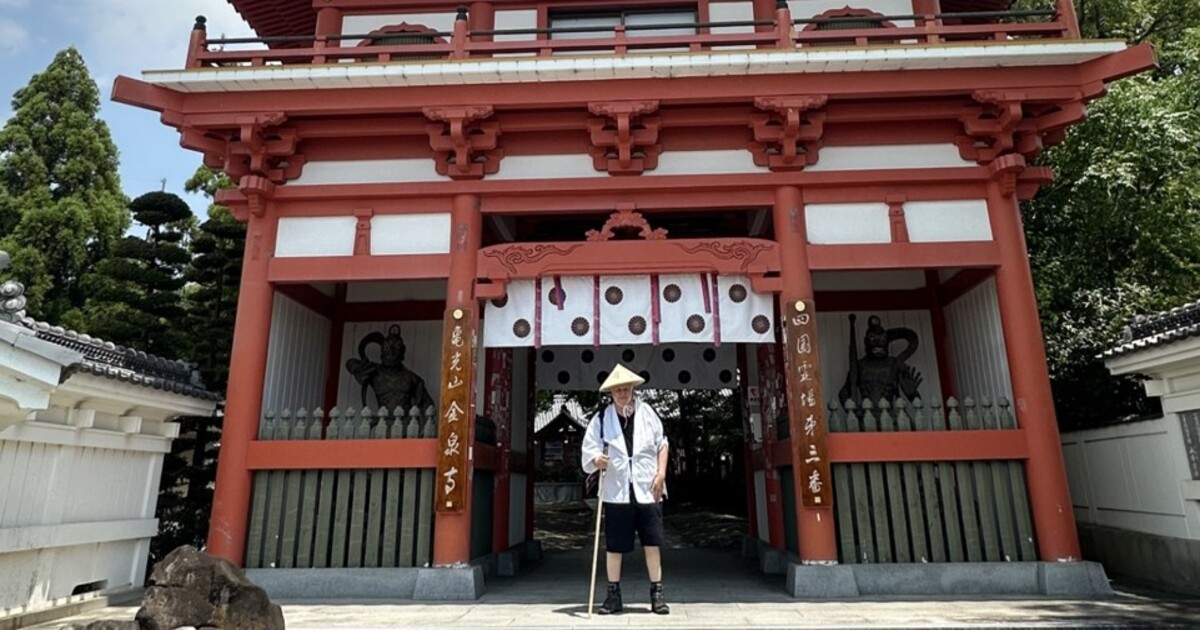Cultural Hiking in Japan
Walking through history on Japan’s most beautiful pilgrimage routes. A personal reflection.
August 9, 2025

When I went to live in Japan in 2009, it was striking to me how few foreign tourists there were for a country with such a rich history and culture. In 2008 Japan received only 8.35 million foreign visitors, whereas Thailand had over 14 million.
But things would quickly change. Abenomics, an economic revitalization program led by former Japanese Prime Minister Shinzo Abe, made visiting Japan easier. East Asia’s emerging middle class increasingly began to have the means to visit Japan. And more recently, the weak yen exchange rate has helped attract tourists.
Fast forward
In 2024 Japan welcomed almost 37 million foreign tourists, providing a major boost to the economy as they spent some $53 billion. International tourism is now ranked as Japan’s second-largest export sector, following automobile exports.
Where do these tourists come from? The main sources last year were South Korea (8.8 million), China (7.0 million), Taiwan (6.0 million), the United States (2.7 million) and Hong Kong (2.7 million). Around 70% of foreign visitors went to the major historical and cultural attractions of Tokyo, Kyoto, Nara and Osaka.
From shopping sprees to regional retreats
Chinese tourists have long been notorious for their shopping sprees in Japan where they can buy high quality consumer products like cosmetics, shoes and electronics — something which can be more problematic back in China.
Travellers from the United States, Europe, India, Singapore and Australia (like me) are spending more time in regional areas. Some of my almost one million Australian compatriots enjoy visiting excellent ski resorts like Niseko, Hakuba and Nozawa Onsen.
The joy of “cultural walking”
But what I love most of all in Japan is “culture walking.” A couple of weeks ago, I walked a few days on the “Ohenro-san walking trail,” a beautiful and inspiring traditional walking pilgrimage in Japan’s southern island of Shikoku (Henro is the Japanese word for pilgrim).
Many Europeans compare Ohenro-san with the Camino de Santiago (known in English the Way of St. James), although at this stage it attracts much fewer pilgrims. It is a historic Buddhist route, established over 1,200 years ago. Inspired by a monk named Kūkai (who founded Shingon Buddhism), the pilgrimage and its customs are deeply ingrained in the people of Shikoku.
Before setting off on Ohenro-san it is imperative to buy a pilgrim hat, coat and walking stick. You must also buy a pilgrim book which you have stamped at each of the temples along the way. I did a small portion of the 1,200 km circular route which connects 88 temples, eight of which I visited.
Rituals and reflections on the pilgrimage
When you arrive at a temple you must bow respectfully at the temple gate, then cleanse your hands and mouth at the fountain, and sound the bell. You can leave a name slip with your wish in the main hall, light a candle and three sticks of incense, toss coins in the offering box and chant sutras.
For me the most impressive temple was number eight, Kumadaniji. It has one of the largest Niomon gates among the pilgrimage temples. It was built in 1687 and is designated as a Cultural Property by Tokushima Prefecture.
There are many ways and reasons for doing Ohenro-san. I will probably try to do a few chunks each year until I finish it. It is also possible to cheat a little by taking a bus or taxi here and there. Most importantly, the pilgrimage enables one to enjoy traditional Japanese culture and scenery which is usually very well maintained. And visiting these exquisite temples can only calm one’s spirit and foster inner peace.
Discovering Japan’s ancient walking routes
Another walk that I have tried is the Nakasendo trail, a historic Japanese route that connected Edo (present-day Tokyo) and Kyoto during the Edo period (1603 to 1868). It is known for its well-preserved post towns, offering a glimpse into Japan’s past and beautiful scenery. The trail is approximately 534 kilometers long and had 69 post towns along the way.
Then there is the Kumano Kodo trail, a Shinto pilgrimage dating back over 1,000 years. On the Kumano the goal is to reach three Holy Shinto Shrines known collectively as Kumano Sanzan — Hongu Taisha, Nachi Taisha and Hayatama Taisha.
Rebirth through walking: The Michinoku Coastal Trail
Japan’s newest long-distance hiking trail is the Michinoku Coastal Trail, a 1000+ km hiking trail in the northeastern Tohoku region.
A decade after one of Japan’s most deadly disasters — earthquake, tsunami and nuclear meltdown — a region is being reborn thanks in part to this walking trail.
Preparing for your cultural walk in Japan
Any reader feeling tempted by cultural walking in Japan can find oodles of information on the Internet, along with companies offering walking tours.
But one word of advice is that patience is required. Language is still a barrier, although Google Translate is a great asset. And particularly outside the major cities, the Japanese have very much their way of doing things. But wherever I went I received a warm and polite welcome.
Takeaways
In 2008, Japan received only 8.35 million foreign visitors. In 2024, Japan welcomed almost 37 million.
“Abenomics,” an economic revitalization program led by former Japanese Prime Minister Shinzo Abe, made visiting Japan easier.
Around 70% of foreign tourists visiting Japan go to the major historical and cultural attractions of Tokyo, Kyoto, Nara and Osaka.
What I love most of all in Japan is culture walking. Japan offers beautiful and inspiring traditional walking pilgrimages like the Ohenro-san trail.
Visiting the temples along the Ohenro-san pilgrimage can calm one’s spirit and foster inner peace.

